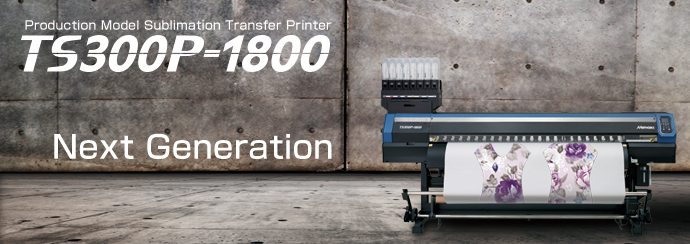Direct Dye sublimation VS Dye sublimation transfer printing
In transfer printing, the printer prints on a special paper that has a coating designed to hold and then, under heat and pressure in a heat press or calendar, release the printed image. When the transfer paper is brought into contact with the fabric in a heat press, and the ink embedded in the paper is converted to a gas (a process called sublimation) and penetrates directly into the fibers of the substrate. Polyester fabrics are required for transfer dye-sub printing because the process works by slightly melting the fibers so that the ink physically becomes part of them. This is why transfer-based dye sub-printed materials are so washfast.
A growing variant of dye-sublimation printing is direct-to-fabric printing, which eliminates the need for transfer paper, although printed fabrics will still need to be run through a calendar — built into the printer or as a separate unit — for the sublimation process to fix the dye to the fabric. Direct-to-fabric dye-sublimation also requires pretreated polyester fabrics.
Other differences between transfer and direct-to-fabric include the nature of the image. The inks used in direct-to-fabric printing penetrate further into the fabric than those used in transfer printing. The result can be more muted colors and softer text. In direct-to-fabric, there is also greater show-through on the reverse side of the fabric, which is why the top application for direct-to-fabric — at least right now — is flags. A lot of development is going into direct-to-fabric dye-sublimation and new inksets and machines are eliminating — or at least reducing — many of its limitations.
Dye-sub works best on polyester-based fabrics, but what about natural or other kinds of synthetic fibers? For physical and chemical reasons, these require other dye-based textile printing inks. Natural cellulose fibers like cotton require reactive dye inks, while natural or synthetic fibers like silk, wool and nylon require acid dye inks. As you can tell, making a universal textile printing machine that can handle all types of fibers is a substantial challenge.
We are starting to see machines hit the market that bridge one or more of these inksets. One interesting device is Mimaki TX300P-1800 Series (different from Mimaki TS300P 1800 Sublimation printer) which features a dual-ink capability, which means users have the ability to print onto natural materials using pigment inks or onto polyester materials with direct dye-sublimation inks using only a single printer. The inksets used in the TX300P-1800 do not require steaming and washing, which are common post-printing processes for many kinds of textile inks.
Know more CLICK oricprinter.com
More info:
Website: www.skyimagepaper.com
Company Name: Fei Yue Digital Technology Co.,LTD
E-mail: sales@feiyuepaper.com
Tel: 86-025-86628894
Whatsapp: +86 18252072197
Address: Central Road 323, Nanjing, Jiangsu, China






评论
发表评论